Introduction Istanbul's Archaeological Museums
Istanbul, a city where history unfolds at every corner, is home to countless treasures that tell the story of civilizations past. One of the most compelling places to witness this rich heritage is the Istanbul Archaeological Museum.
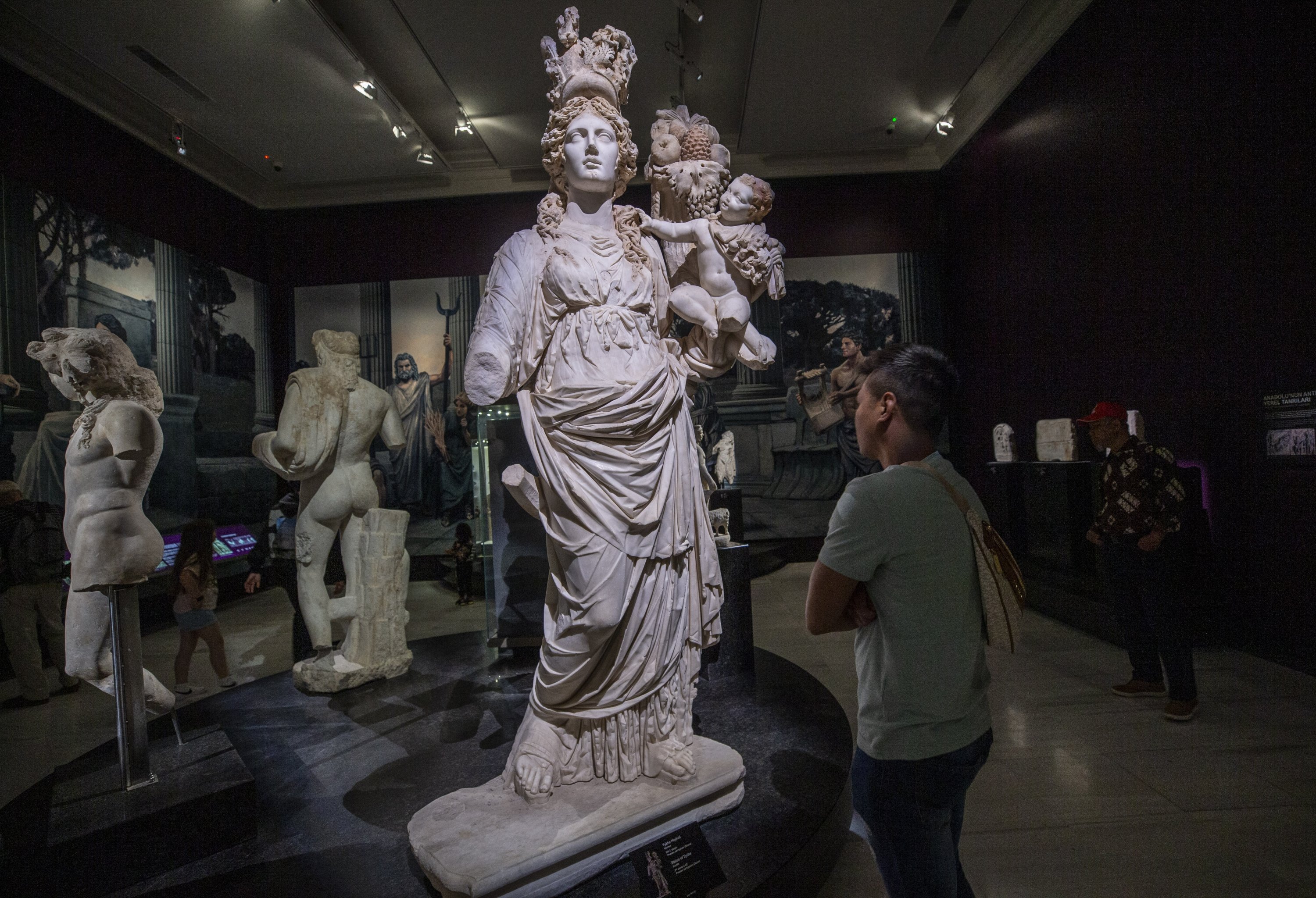
The museum, nestled in the heart of the city, offers a deep dive into Istanbul’s storied past, showcasing artifacts that span thousands of years of human history. As you wander through its halls, you’ll encounter a diverse array of relics, each with its own unique story.
For a truly immersive experience, you can also watch the video “Highlights of the Istanbul Archaeological Museum” on the YouTube channel “Scenic Routes to the Past.”
The Museum's Establishment and Visionaries
Founded in 1891, the Istanbul Archaeological Museum owes its existence to the vision and dedication of Osman Hamdi Bey, an influential Ottoman painter, archaeologist, and museologist.

As the museum’s first director, Hamdi Bey played a crucial role in its establishment and the development of its extensive collection. His passion for preserving the region’s rich archaeological heritage laid the groundwork for what would become one of the world’s most important museums.
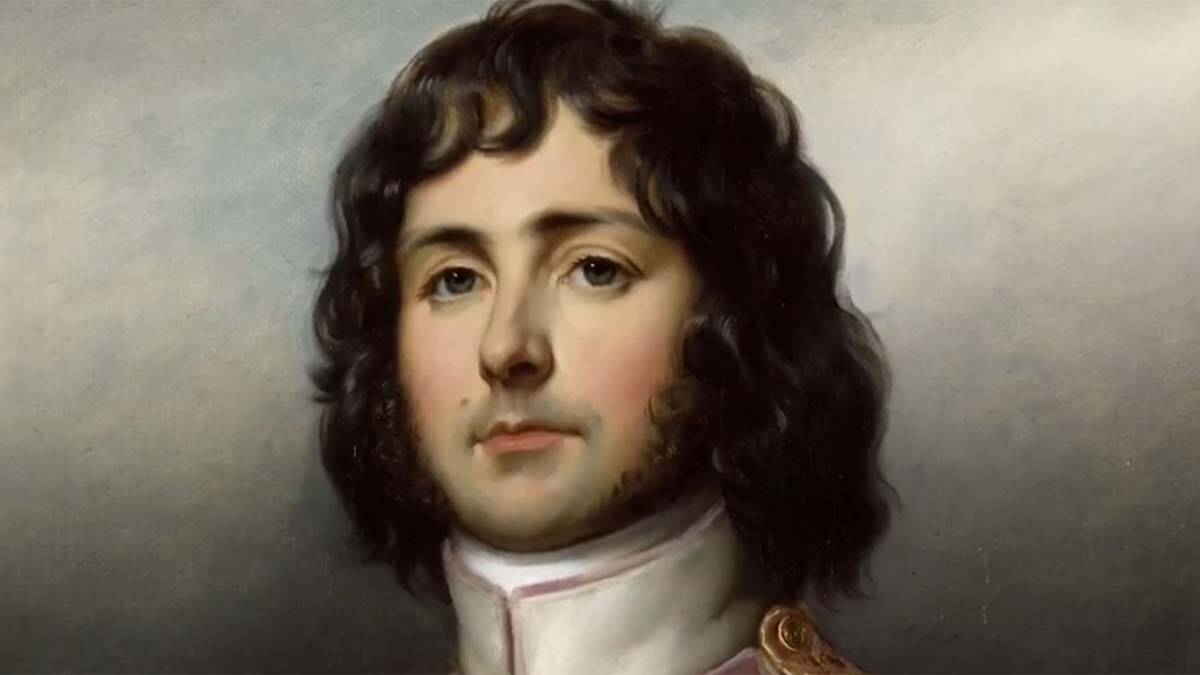
The museum’s impressive neoclassical building was designed by the renowned architect Alexandre Vallaury, a French-Ottoman architect who also contributed significantly to the architectural landscape of late Ottoman Istanbul.
 Vallaury’s design harmoniously combines European and Ottoman elements, reflecting the cultural crossroads that Istanbul represents.
Vallaury’s design harmoniously combines European and Ottoman elements, reflecting the cultural crossroads that Istanbul represents.
Diverse Civilizations and Rich Collections
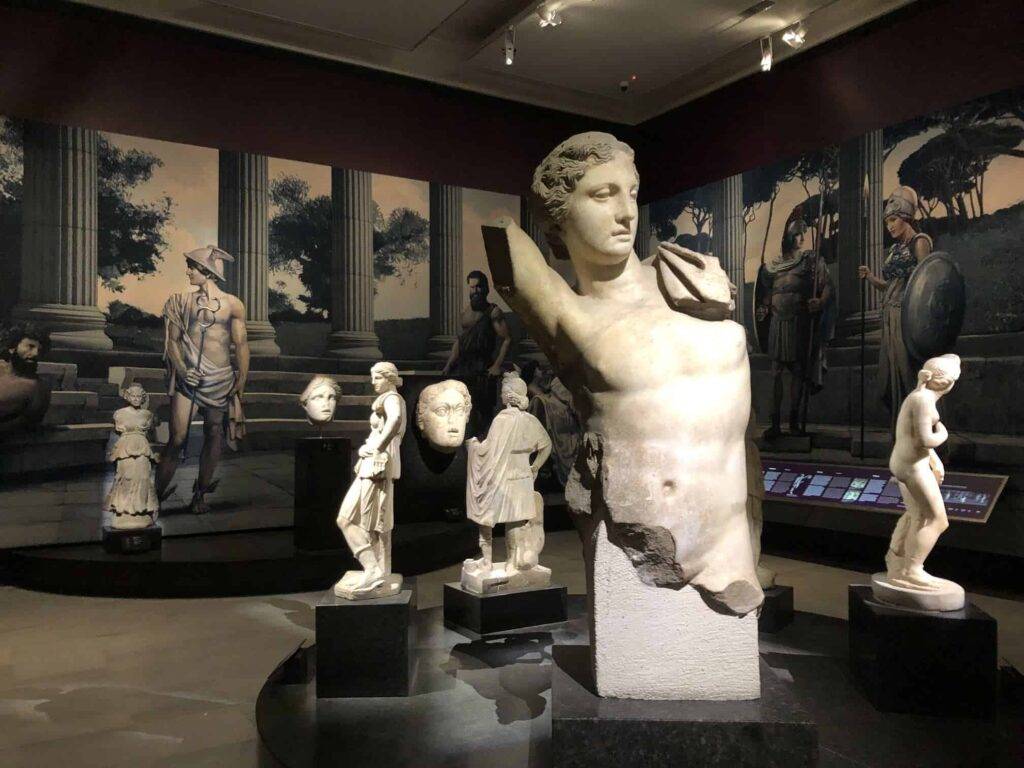
The Istanbul Archaeological Museum houses artifacts from a plethora of ancient civilizations that once thrived in the Anatolian and Mediterranean regions. These include the Persians, Greeks, Romans, Byzantines, and various other Anatolian cultures. The extensive collection provides a comprehensive view of the diverse influences and historical developments that shaped this region over millennia.
Sculpture Garden: A Glimpse into Byzantium
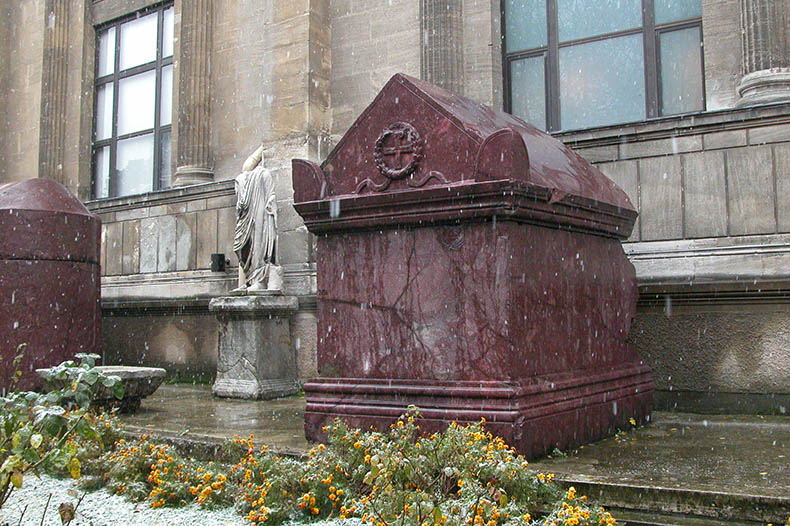
The tour begins in the museum’s sculpture garden, a serene space filled with fragments from ancient and Byzantine Constantinople. Among the standout pieces is a massive Gorgon head, a reminder of the mythical creatures that once populated ancient lore.
You’ll also see four unnamed porphyry sarcophagi from the Church of the Holy Apostles, dating back to the early Byzantine centuries, and a palm tree-carved column that speaks to the artistry of ancient sculptors. The Garland sarcophagus from Yasos, adorned with intricate carvings, is another must-see.
Sarcophagi of the Royal Necropolis of Sidon

The museum is perhaps best known for its stunning collection of sarcophagi from the Royal necropolis of Sidon, also known as Alexander Sarcophagus.
These exquisite pieces showcase a blend of artistic influences from Greek and Egyptian cultures, reflecting the cross-cultural interactions of the ancient world. Noteworthy among them are the Elysian sarcophagus and the Sarcophagus of the Morning Women. However, the crown jewel of this collection is undoubtedly the Alexander Sarcophagus, which once held the King of Sidon, Abdallonimus.

This masterpiece vividly depicts the Battle of Issus between the Greeks and Persians, with remarkable detail and artistry.
Highlights from the Inner Chambers
As you delve deeper into the museum, you’ll encounter the Alexander Sarcophagus, adorned with vibrant battle and hunting scenes. Although it is not Alexander’s own sarcophagus, the artwork is believed to depict him alongside King Abdalonymus of Sidon. The vivid pigments and dynamic compositions make it one of the highlights of the collection. The museum also houses several portraits of Alexander the Great, including a finely crafted bust from the Hellenistic period, which offers a glimpse into the artistry of that time.
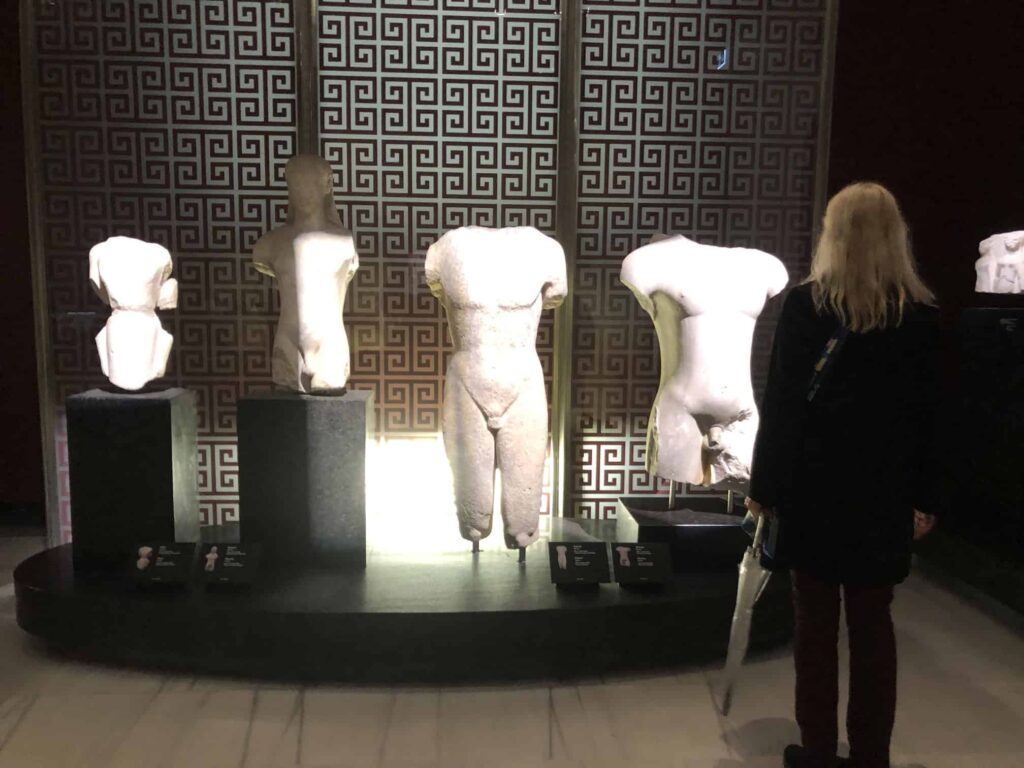
In the same section, a colossal head from Izmir (Smyrna) captures attention. This imposing sculpture is thought to depict either a goddess or a prominent figure, offering a look into the grandeur of ancient Greek artistry. Additionally, visitors will find statues of deities, such as Tyche (the goddess of fortune) and Plutus (the god of wealth), symbolizing good fortune and prosperity.

The museum’s extensive Roman collection features several impressive statues, including a magnificent statue of Emperor Hadrian, one of the Five Good Emperors, known for his architectural achievements and consolidation of The Roman Empire.
Marble statue of the #Roman Emperor Hadrian, depicted as a conqueror tramping over a defeated enemy.
Found in #Greece/Crete (Hierapytna), 2nd c. CE
Istanbul Archaeological Museum#Archaeology pic.twitter.com/k4IeXzqr1s
— Arys🏺🪶 (@ArysPan) November 8, 2022
Another notable piece is a bust of Emperor Constantine the Great, the founder of Constantinople, whose legacy still shapes the city’s identity today. These statues, along with other well-preserved Roman artworks, showcase the grandeur and power of the Roman Empire, as well as its deep connections to the history of Istanbul.

Western Turkey’s Marble Heritage
A significant number of the museum’s artifacts, particularly the sarcophagi and sculptures, are crafted from the rich marble quarries of western Turkey. Renowned in antiquity for its high quality and diverse types, this marble was a prized material for artists and builders alike. Its enduring beauty and durability have ensured that these masterpieces remain well-preserved to this day.
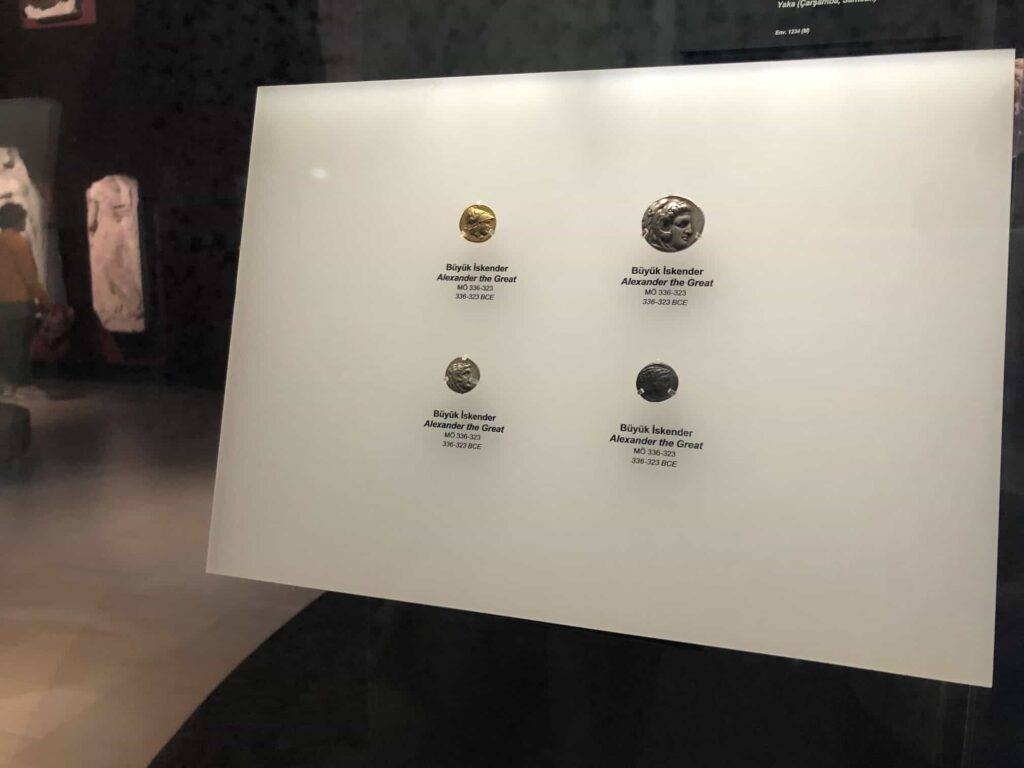
Relaxing at the Museum's Café
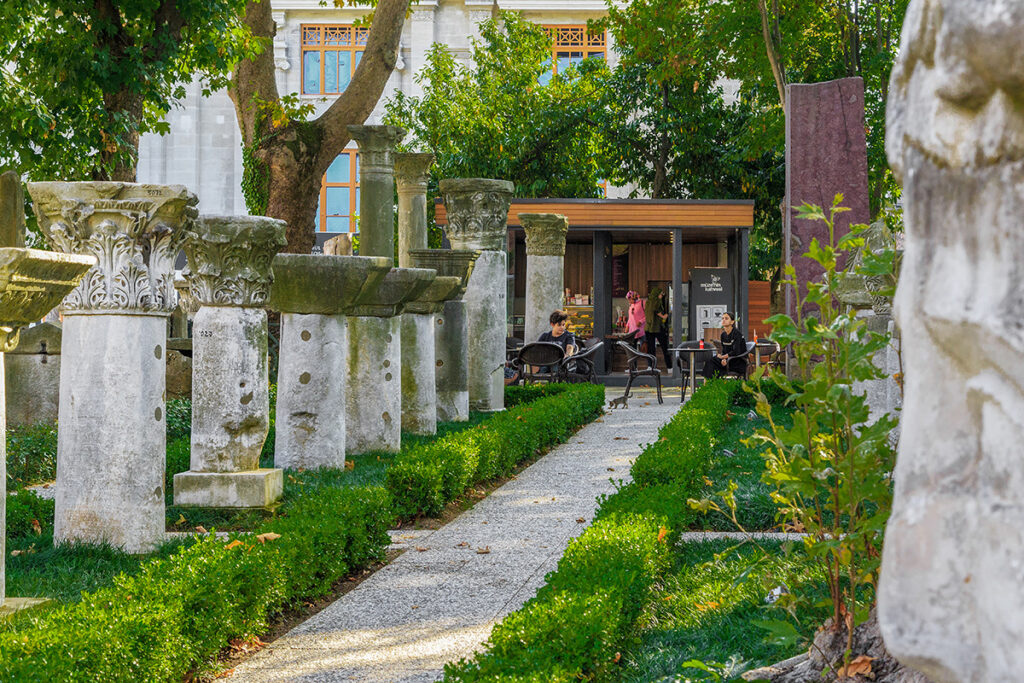
After exploring the museum’s vast collections, visitors can indeed unwind at the charming café located within the museum grounds, near the entrance. This peaceful spot provides a perfect place to relax and reflect on the historical wonders you’ve just experienced, while enjoying a cup of Turkish tea or coffee amidst the tranquil surroundings of the museum garden.
Location & How to get there
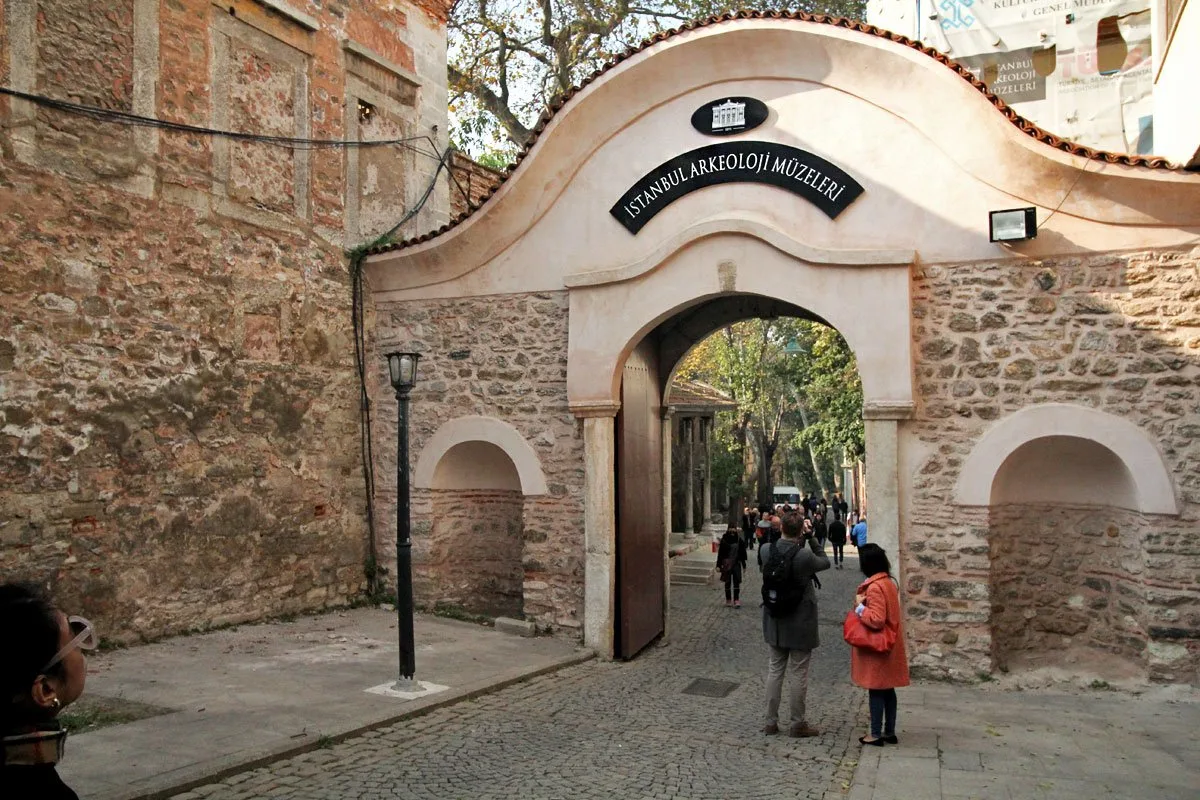
You can reach the Istanbul Archaeological Museum via 2 routes:
- Enter from Gülhane Park‘s main entrance and make right immediately and walk up the street and the entrance will be on your right.
- Enter from Topkapi Palace. Enter the outer courtyard and make a left downhill and the entrance will be on your right.
- Location: Easily accessible in the Sultanahmet district, near Gülhane Park and Topkapı Palace.
- Hours: Open daily except Mondays. Check their website for seasonal changes.
- Admission: Museum Pass Istanbul is accepted.
- Tips: Allow ample time for your visit; this is a vast collection. Guided tours are available for more in-depth exploration.
Contact us for a guided tour
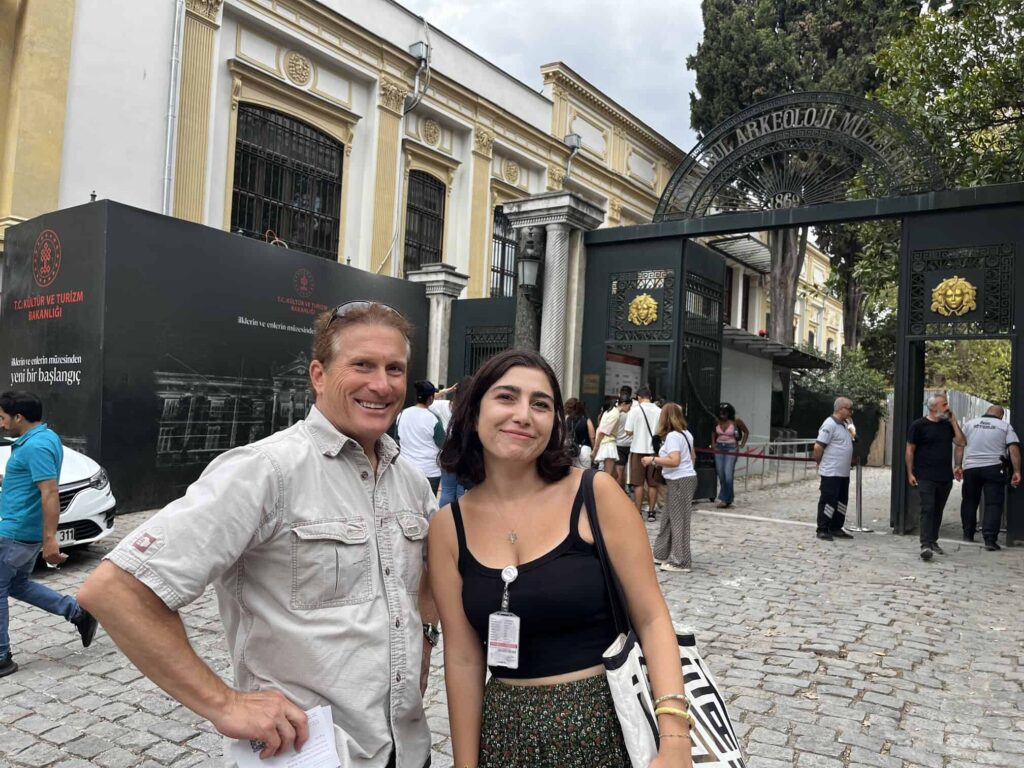
The Istanbul Archaeological Museum is more than just a collection of artifacts; it is a journey through time. Each piece, from the grand sarcophagi to the delicate sculptures, offers a window into the lives and cultures of those who came before us. But for those who wanted to get a glimpse into the rich archaeology of Anatolia, this museum is a must!

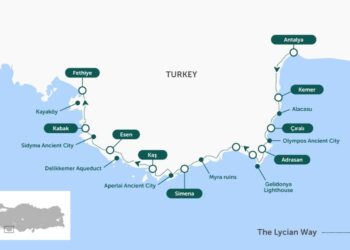
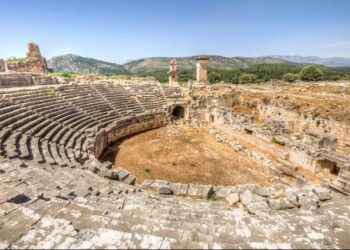
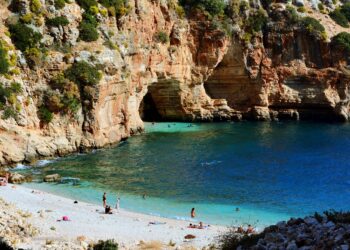

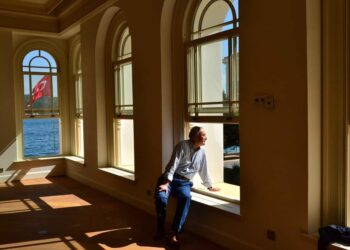

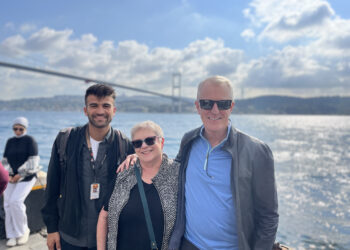
Thanks for the lovely article. It is great learning a bit about the museum before we visit this Spring.
Thanks for a great article. Definitely adding the museum to the itinerary for Istanbul.
Glad you enjoyed the article. Hope that you have an amazing time in Istanbul. Let us know if you need a professional tour guide to assist you in your excursions.